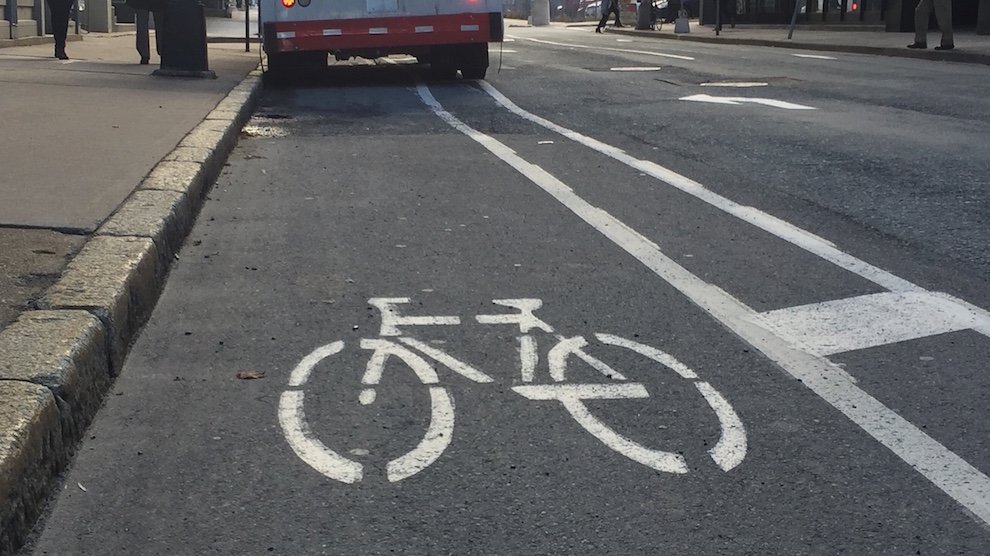Bike lanes
HRM planning bike lane changes for downtown Halifax
Regional council expects to hear options for Hollis, Lower Water streets this year

caption
The Hollis Street bike lane is often blocked by loading vehicles.
caption
The Hollis Street bike lane is often blocked by loading vehicles.Downtown Halifax could have a new bike lane meant for cyclists of all skill levels, as early as next year.
On Tuesday, Halifax regional council voted for staff to bring forward a potential plan for at least one permanent, protected bike lane in the downtown core.
“What we’re aiming to come back to council with is an option that is comfortable for people who do not bicycle now,” said David MacIsaac, active transportation supervisor. “So that will necessitate some type of separation, or it may involve the bike lane being up at the same level as the sidewalk.”
During council, MacIsaac said options could include a new bi-directional lane on Hollis Street or Lower Water Street, or a lane heading north on one street and south on the other. Related stories
Those streets are two options being explored for the new, protected bike lanes, both of which already have lanes along part of the roadway. A protected lane would mean there is a barrier between traffic and cyclists, for example.
The main issue that needs to be addressed is accessibility. MacIsaac said currently, the Hollis Street lane isn’t for people who are uncomfortable cycling in mixed traffic, especially because parked vehicles often block it. A new lane would change this.
Coun. Russell Walker raised concerns about the Hollis Street bike lane, as Hollis has lots of trucks loading and unloading at any given time. A protected cycling-only area would be a barrier to that work, he said. He then offered up Barrington Street and Granville Street as options.
MacIsaac said Lower Water and Hollis are the best options. Barrington is not in consideration right now because of the amount of bus traffic on the street.
However, Coun. David Hendsbee did not see that as an issue.
“We put bicycle racks on our buses to encourage that mobility. Why not share the same roadway? I really believe Barrington is probably more of a conducive atmosphere to have this corridor on than Hollis or Lower Water would ever be,” said Hendsbee.
As for Granville, MacIsaac said the street couldn’t fit a lane that goes completely from the north to south end as it only runs from Salter Street to just past Duke Street, about six blocks.
The bike lane on Hollis could only officially be “all ages and abilities” from north to south once the Cogswell redevelopment project is complete and the Cogswell Interchange has been removed or changed, as there is no option for a protected lane coming from the north down to Hollis street at this time, said MacIsaac.
Coun. Lisa Blackburn was concerned about other types of accessibility, like access to entryways and options for persons with disabilities. MacIsaac said they would be considered in the report.
Halifax already has a protected bike lane that deals with Blackburn’s concern. University Avenue by Dalhousie University has sections that are segregated from regular traffic by plastic barriers, except for gaps where cars can stop and park briefly if necessary.
Planning costs for the potential changes are covered in part by the provincial government’s Connect2 program, which has provided $30,000. The rest will be covered by the Halifax Regional Municipality’s capital budget. Council expects to see the report later this year, showing suggestions for installing the bike lane(s) in 2019.

